LAB REPORT
Science and Technology Making Headlines
June 4, 2021


An international research team, including scientists from Lawrence Livermore, have validated a nearly 40-year-old prediction and experimentally shown that helium rain is possible inside planets such as Jupiter and Saturn (pictured). Image courtesy of NASA/JPL/Space Science Institute.
It’s raining helium
Sprinkles of helium rain may fall on Jupiter.
At pressures and temperatures within the gas giant, the hydrogen and helium that make up the bulk of its atmosphere don’t mix, according to laboratory experiments reported last week by Lawrence Livermore scientists and collaborators. That suggests that deep within Jupiter’s atmosphere, hydrogen and helium separate, with the helium forming droplets that are denser than the hydrogen, causing them to rain down.
Jupiter’s marbled exterior is pretty familiar territory, but it’s still not clear what happens far below the cloud tops. So researchers designed an experiment to compress hydrogen and helium, reaching pressures nearly 2 million times Earth’s atmospheric pressure and temperatures of thousands of degrees Celsius, akin to inner layers of gas giants.
“We are reproducing the conditions inside the planets,” said physicist Marius Millot of Lawrence Livermore National Laboratory.

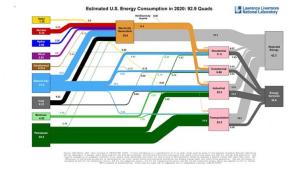
According the most recent LLNL Sankey flow chart, Americans used 7 percent less energy in 2020 due in part to the COVID-19 pandemic.
Energy use takes a dive
U.S. energy consumption dropped 7.3 quads in 2020, and the chart that explains everything about energy had some big changes last year.
Every year, Lawrence Livermore National Laboratory and the Department of Energy produce Sankey flow diagrams showing where energy in the U.S. comes from and where it's going.
The single most important number here is the total estimated energy consumption of 92.9 quads. A quad is a quadrillion BTUs and is equivalent to the energy in 8,007,000,000 gallons of gasoline – it's big. In 2019, the total consumption was 100.2 quads.
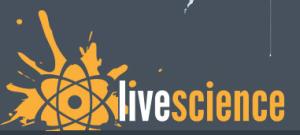
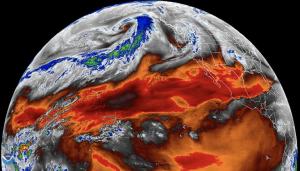
New research by LLNL scientists shows that satellite measurements of the temperature of the troposphere (the lowest region of the atmosphere) may have underestimated global warming over the last 40 years. One of the physical processes they looked at was tropical water vapor like shown in this NASA image.
The heat is on
The global warming that has taken place may be even worse than we thought. That's the takeaway from a new study that finds satellite measurements have been underestimating the warming of the lower levels of the atmosphere over the last 40 years.
Basic physics equations govern the relationship between temperature and moisture in the air, but many measurements of temperature and moisture used in climate models diverge from this relationship, the new study finds.
That means either satellite measurements of the troposphere have underestimated its temperature or overestimated its moisture, said study leader Ben Santer, a climate scientist at Lawrence Livermore National Laboratory.
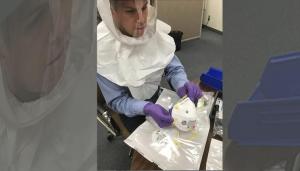
LLNL scientist Kyle Fuhrer prepares an N95 mask for a fit test. Photo by Sam Paik/LLNL.
Feel the heat
Scientists at Lawrence Livermore have determined that heating N95 respirators up to 75 degrees Celsius for 30 minutes deactivates a surrogate coronavirus without compromising the device’s fit and its ability to filter airborne particles.
This temperature (equivalent to 167 degrees Fahrenheit) is easily achieved in hospitals and field settings allowing for the N95s to be reused once decontaminated. This heat treatment can be applied at least 10 times on an N95 respirator without degrading its fit.
Previous studies have reported that the filtration efficiency of N95s is not negatively impacted by these heating conditions.
“These results suggest that thermal inactivation of coronaviruses is a potentially rapid and widely deployable method to reuse N95 respirators in emergency situations where reusing the respirators is necessary and sterilization is unavailable,” said LLNL electrical engineer Travis Massey, lead author of the study.

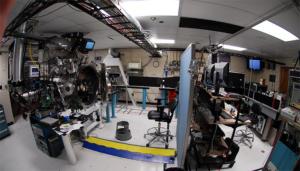
The LLNL Jupiter Laser Facility was used to achieve slow and fast light inside plasmas, therefore demonstrating the ability to tailor the refractive index of a laser-plasma system.
Casting some light on plasma
Light has a strict speed limit, but under certain conditions, this boundary can be broken for individual pulses of light. So far, light has been made to travel above its speed limit in media including atomic gases and optical fibers.
Clément Goyon from Lawrence Livermore National Laboratory and colleagues now show how to adjust the speed of light in a plasma, creating an order-of-magnitude speed change of the light. The demonstration could help improve control over inertial confinement fusion experiments and could lead to plasma-based optics for high-power lasers.
The velocity at which pulses of light pass through a material can strongly differ from the speed (c) that light travels in a vacuum. This velocity, called the group velocity, can be both higher or lower than c, and it factors in how the shape of a light pulse spreads and distorts as it moves through a material (c equals speed of light in a vacuum, or approximately 300,000 kilometers per second).
For their demonstration, Goyon and colleagues first created a hydrogen-helium plasma by ionizing a jet of the gas with a polarized laser beam. Then they aimed a second laser beam at the plasma. Where the paths of the two beams crossed, the horizontal component of the second laser pulse slowed in response to a change in the plasma’s refractive index. This slowing came from interactions between the two lasers and the plasma.





